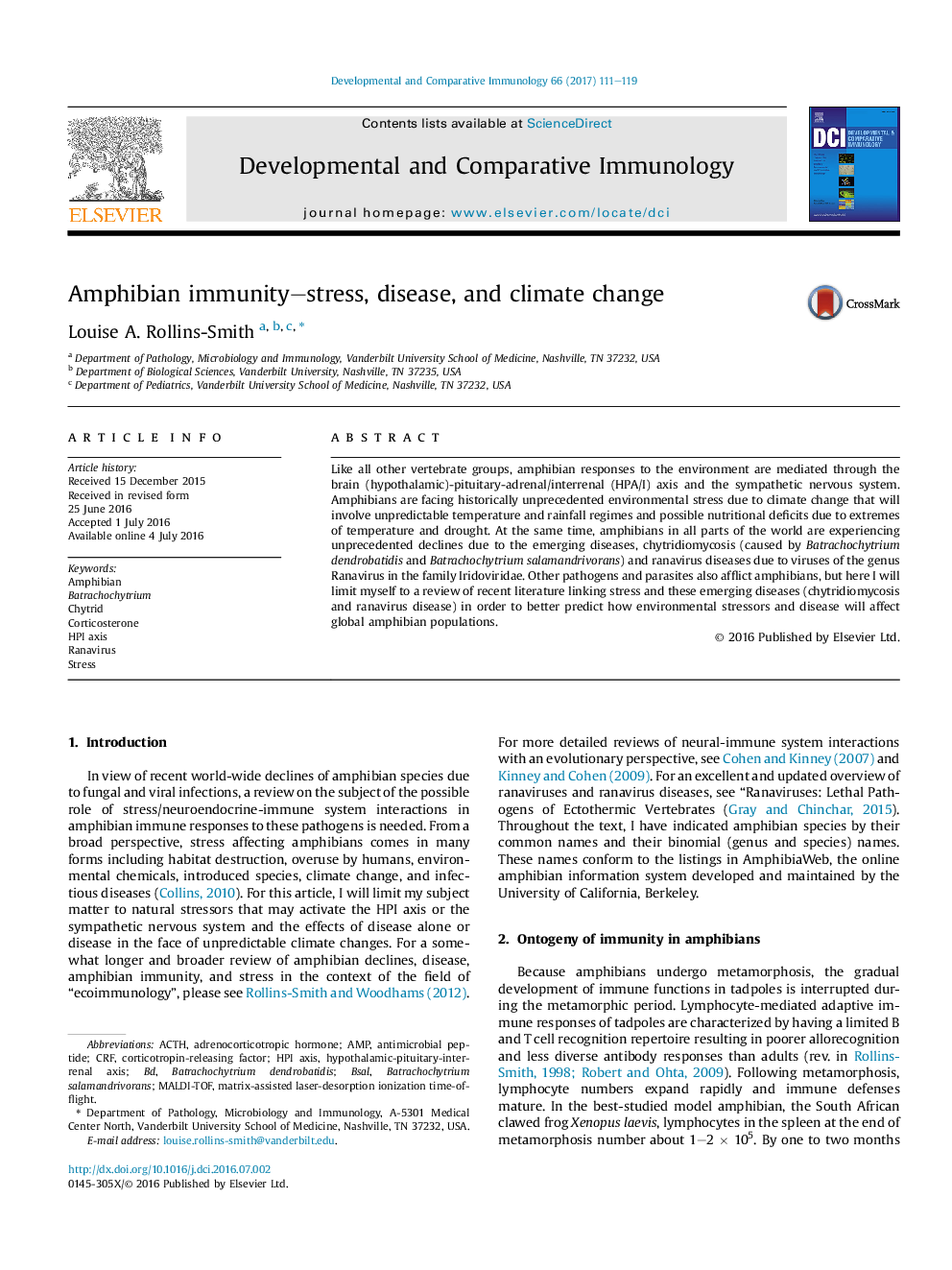| Article ID | Journal | Published Year | Pages | File Type |
|---|---|---|---|---|
| 5540006 | Developmental & Comparative Immunology | 2017 | 9 Pages |
•Here, I review literature linking stress, the HPI axis, and emerging diseases.•Amphibian responses to the environment are mediated through the HPI axis.•Amphibians face declines due to chytridiomycosis and ranavirus disease.•Environmental stress and disease may interact to compromise survival.•Stress due to climate change will impact the immune system in unpredictable ways.
Like all other vertebrate groups, amphibian responses to the environment are mediated through the brain (hypothalamic)-pituitary-adrenal/interrenal (HPA/I) axis and the sympathetic nervous system. Amphibians are facing historically unprecedented environmental stress due to climate change that will involve unpredictable temperature and rainfall regimes and possible nutritional deficits due to extremes of temperature and drought. At the same time, amphibians in all parts of the world are experiencing unprecedented declines due to the emerging diseases, chytridiomycosis (caused by Batrachochytrium dendrobatidis and Batrachochytrium salamandrivorans) and ranavirus diseases due to viruses of the genus Ranavirus in the family Iridoviridae. Other pathogens and parasites also afflict amphibians, but here I will limit myself to a review of recent literature linking stress and these emerging diseases (chytridiomycosis and ranavirus disease) in order to better predict how environmental stressors and disease will affect global amphibian populations.
